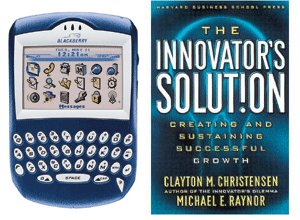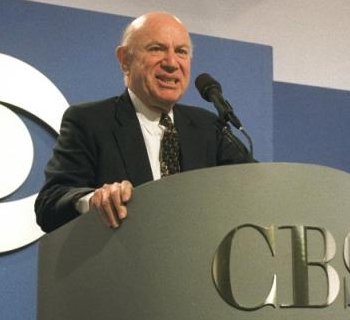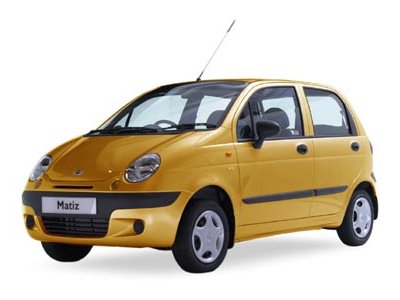November 30, 2003
Verizon Wireless Winning, Sprint PCS & AT&T Wireless Getting Hit by Number Portability
Just a quick story today turned up a week after WNP went into effect, from Asbury Park Press, Verizon Wireless appears to be gaining from the new law, while AT&T Wireless and Sprint PCS seem to be losing:
-
To determine which U.S. wireless companies were winning the most customers this week, Wachovia Securities Inc. analyst Jennifer Fritzsche visited stores.
RBC Capital Markets analyst Jonathan Atkin contacted retail-chain owners and managers. Legg Mason Wood Walker Inc.'s Craig Mallitz surveyed colleagues. Bob Egan of market researcher Mobile Competency extracted figures from mobile-phone carriers.
They turned up similar results: Verizon Wireless, the biggest U.S. mobile-phone company, is winning customers in the wake of a rule that allows users to keep their phone numbers when switching providers. AT&T Wireless Services Inc. may be losing them.
"Verizon Wireless stores had the most traffic," Fritzsche wrote in a research note on Tuesday, after visiting 15 stores in Chicago on Monday. "AT&T Wireless and Sprint PCS seemed to be the carriers where people wanted to switch from."
Verizon Wireless and its competitors have declined to say how they've fared since the U.S. Federal Communication Commission number mandate took effect Monday, forcing analysts and investors to gather anecdotal evidence. Analysts had picked Bedminster-based Verizon Wireless as a likely winner before the rule began, saying its network is the most reliable.
RBC's Atkin, who's been in touch with owners and managers of retail chains encompassing about 400 stores, said AT&T Wireless and Cingular Wireless LLC have received a "disproportionately large number" of requests to switch.
Verizon Wireless -- a joint venture of Verizon Communications Inc. and Vodafone Group PLC -- and Nextel Communications Inc. have gained more subscribers than they've lost, he said.
Egan made the same observations, based on store visits and tallies from five of the six largest U.S. carriers: Verizon Wireless, Cingular, Sprint, Nextel, and T-Mobile USA.
Albert Lin, an analyst at American Technology Research Inc. in San Francisco, studied reports from telecommunications-software suppliers such as Amdocs Ltd. and Convergys Corp., which are monitoring activity in phone-number switches.
Verizon Wireless is gaining the most customers, followed by Reston, Va.-based Nextel and Overland Park, Kansas-based Sprint PCS, he said. Cingular Wireless, AT&T Wireless and Deutsche Telekom AG's T-Mobile unit are losing clients, Lin said.
"We believe that our message of the largest and most reliable network is resonating in the marketplace," Verizon Wireless spokesman Jeffrey Nelson said.
Nextel spokesman Christopher Doherty said it's hard to distinguish whether customers coming in to buy Nextel service would have done so without number portability.
"It's been busy, but it's also one of the busiest shopping times of the year for wireless," Doherty said.
"We'll let the results speak for themselves," T-Mobile spokesman Richard Brudvik-Lindner said. "Opinions right now are all over the map, and we're not going to get into playing the horse race game on this."
Well, I can tell you this: not as many people switched as were expected to, and most of the carriers had a decent strategy in place from an advertising perspective. I think most people are waiting to see what the first-movers experience is before swapping service. Frankly, I think it's silly to give anybody a cell phone number - my home phone service - VoIP provider Vonage - will forward unanswered calls automatically.
- Arik
November 29, 2003
Aurora Helps with Christopher Reeve Paralysis Foundation Benefit Basketball Tournament

Today was an event all of us at Aurora have been thinking about, anticipating and looking forward to for the past few weeks, as my brother, Derek Johnson (who runs Aurora's research & analysis business) helped organize (with Charley Anderson, an Aurora alumnus, curiously enough) the Inaugural Friends of David Busta Basketball Tournament to Benefit the Christopher Reeve Paralysis Foundation.
 The day was great fun - I made a step forward in my food-service career by volunteering in the snack bar, while Derek, Charley and about 60 other guys played three forty-minute basketball games. I think they were all pretty tired out. (I didn't play because I didn't want to show off... er, well anyhow, with all that throwing and running and stuff, I probably wouldn't have fared well.) The picture above is, left to right, Derek, David Busta and Charley - read the story in the local paper for more info:
The day was great fun - I made a step forward in my food-service career by volunteering in the snack bar, while Derek, Charley and about 60 other guys played three forty-minute basketball games. I think they were all pretty tired out. (I didn't play because I didn't want to show off... er, well anyhow, with all that throwing and running and stuff, I probably wouldn't have fared well.) The picture above is, left to right, Derek, David Busta and Charley - read the story in the local paper for more info:
David Busta basketball tournament great success
Busta Basketball Benefit is Nov. 29
First annual David Busta Basketball Benefit
It was a great success in the end - over $16,000 raised to help fund spinal cord and paralysis research. And, that's enough to make any big brother - or boss - awfully proud. ;-)
- Arik
November 28, 2003
Black Friday: Only 26 Shopping Days ‘Til Christmas

If there was any doubt that Christmas shopping season was underway today, then you weren't out shopping at 5:00 AM like the rest of us. Just a brief selection of articles for you today below, as I recover from my triptophan overdose from yesterday. Here's an excerpt, followed by some fun story links:
-
Heavy purchases of digital cameras, toys, clothes and more ignited the holiday shopping season over the weekend and bolstered projections for it to be best in five years.
Items were snapped from shelves early as many stores opened their doors by 6 a.m. Friday for the official start of the holiday shopping season. The steepest discounts ran until noon.
Sales for the first day of the season were $7.2 billion, up 5% from Black Friday last year, according to ShopperTrak. The day after Thanksgiving is dubbed Black Friday because many retailers see their balance sheets shift from red to black during the holiday shopping season.
"It was a very pleasant surprise that demand was as strong as it was on Black Friday," says ShopperTrak retail consultant Michael Niemira, citing reports that full-priced merchandise did well. "That is really a vote of confidence by the consumer that the 2003 holiday season is likely to be one of the best in years."
Consumers are loosening the grip on their wallets because of the improved economy, lower interest rates and an upswing in the stock market.
Wal-Mart, the world's biggest retailer, posted record sales on Friday, topping $1.5 billion at U.S. stores compared with $1.4 billion last year on Black Friday. Its top selling categories were home electronics, small appliances and toys, say officials at Wal-Mart, which has 3,500 stores in the USA.
Visa USA, the nation's largest consumer payment system, reported total U.S. spending on Visa credit and debit cards for Friday and Saturday was $6.5 billion, up 12% vs. the same days last year.
Most retailers will disclose results for the Thanksgiving weekend when sales totals for November are released on Thursday.
Early bird shoppers had to arrive at stores before the doors opened. Many items — such as color TVs at Circuit City for $89-$120 and $29.87 DVD players and $498 HP Pavilion desktop computers at Wal-Mart — sold out in minutes.
Holly Register, 49, of Suffolk, Va., arrived at Chesapeake Square mall here at 6:05 a.m. in search of CD players for two of her daughters. She was lucky enough to get the slim wall-mountable systems that she wanted on sale for $79.99 at RadioShack. "I've scratched them off my list," Register says of daughters Elena, 14, and Masha, 12.
Lana Olson, however, took the risk of waiting for steeper discounts. The 53-year-old resident of Surry, Va., only bought gifts that had to be mailed soon to nieces and nephews.
While Black Friday has been the fourth-busiest shopping day of the year, Monday is expected to be the busiest day for online retailers. Consumers returning to work will use high-speed connections at the office and search for what they could not find in stores.
Online sales are expected to soar 42% during the holiday season to $12.2 billion, according to Forrester Research.
- Marketers Fire Up for the Holiday Season
- Discount Retailers Battle for Traffic
- Consumers Buying as Much as Last Year
- Bargain Shoppers Seek Holiday Specials
- Woman Trampled in Wal-Mart Stampede
- Early Bird Specials Woo Bargain Hunters
I was particularly appalled/interested in the Wal-Mart-woman-trampled story - although late-breaking news has it, she's done this before, so I'm holding back judgement.
- Arik
November 27, 2003
The Atkins Economy: Low-Carbs as a Competitive Differentiator in the Food & Restaurant Industry
 Since it's Thanksgiving, I thought it'd be fitting, as we're all about to overeat, to think of the country's greatest - and arguably most successful, in terms of net pounds lost - diet trend and its effects on the economy. The Atkins Lifestyle has become more than just a trend. If you love to eat beef, you know it's gotten a lot more expensive of late, and so have a host of other high-protein, low-carb foods. Meanwhile, Unilever - parent company of Slim-Fast - is blaming Atkins for a 21 percent fall-off in profits for the competitor. Likewise, there are a lot of companies taking advantage of the Atkins Economy - here's an exceprt from another BrandChannel piece on the subject:
Since it's Thanksgiving, I thought it'd be fitting, as we're all about to overeat, to think of the country's greatest - and arguably most successful, in terms of net pounds lost - diet trend and its effects on the economy. The Atkins Lifestyle has become more than just a trend. If you love to eat beef, you know it's gotten a lot more expensive of late, and so have a host of other high-protein, low-carb foods. Meanwhile, Unilever - parent company of Slim-Fast - is blaming Atkins for a 21 percent fall-off in profits for the competitor. Likewise, there are a lot of companies taking advantage of the Atkins Economy - here's an exceprt from another BrandChannel piece on the subject:
-
As frustrated consumers warm to low-carb diets, food, beverage and restaurant brands have been right behind them. Big brands including Heinz, McDonald’s, PepsiCo, KFC, Coors and Hain Celestial Group either have just plunged into this marketplace or are making plans to do so soon, joining early committers such as Anheuser-Busch, with its hot-selling Michelob Ultra beer, and an array of small companies that have been feeding the trend for years. Sales for low-carb specialty-product companies such as Atkins Nutritionals Inc. are spiraling skyward, as is the low-carb business of Internet-based diet-plan companies such as eDiets.com.
On the flip side, the rising low-carb tide has buffeted major food companies, such as Kraft, that haven’t acted quickly enough to come along. It has taken the air out of once high-flying diet brands such as Slim-Fast, which are based on old trends of weight loss. And it has stunned entire segments of the food business that are carbohydrate-based, such as baked goods, pasta and orange juice.
"A lot of people believe in it, and [low-carb diets] certainly have had results in terms of weight loss for a lot of people," says Steven Reinemund, chairman and CEO of PepsiCo Inc. The Purchase, New York-based giant plans to launch new and reposition existing products into the low-carb segment as early as next year, says Reinemund.
"We’re not in business to tell people what’s right and wrong in terms of personal commitment to health programs," Reinemund continues. "But if they want low-carb alternatives, we want to make sure we have those alternatives in our portfolio. […]We do have programs in all of our businesses to capitalize on what we think is a trend."
Beverage-industry consultant Tom Pirko says that "the low-carb thing is being driven by successful products and by a lot of media coverage. It has the biggest consumer-consciousness badge in the industry right now, and companies see that."
Sam Rovit, food-industry partner for the consulting firm Bain & Co., says that low-carb has demonstrated such great appeal because it’s a relatively simple dieting message, similar to the low-fat mantra of several years ago. "People have always said, ‘Eat in moderation, and balance food groups,’ but that’s complicated -- it’s not an easy sound bite," he says. "But just saying ‘low-carb’ is an easy sound bite. People think, ‘I can follow that: Just cut out pasta, bread and beer.’ "
Yet not surprisingly for a trend that has moved so far, so fast, some food-company players and independent analysts already are hedging their bets about the staying power of the low-carb category, a major factor in corporate decisions about whether to opt in.
"Established food brands have to be very careful about this," says Julian Mellentin, editor of New Nutrition Business, a global trade journal. "They want to be opportunistic enough to take advantage of what mileage there is in chasing this low-carb phenomenon. But they have to be careful that they don't follow their opportunism over the cliff. And I don't think the good ones will."
While McDonald's Corp., for example, seems to have begun reversing its marketplace slide of the last few years in large part on the strength of new, better-for-you products such as salads, the brain trust of the Oak Brook, Illinois-based fast-food leader remain skeptical of the low-carb phenomenon. "[W]hen customers start telling us that this is what they want, and we start seeing levels of that interest rise, we'll start doing something about it," says Ken Barun, the corporate vice president whose bailiwick includes "healthy lifestyles." "But we haven't seen customers doing that yet; there's no groundswell."
- Arik
November 25, 2003
Colgate vs. Crest: Round One in Fast-Growing Tooth-Whitener Market

I've always thought that "too white" look on a person's teeth was a real clue the person was posing hard, but apparently not everyone agrees with my specious opinion of teeth that glow in the dark.
Call it the "War of the Whiteners" - Colgate is suing P&G, joining a trend among P&G's consumer product competitors lately for "false advertising over ads that mention Colgate's Crest dental products, adding to a growing number of lawsuits as P&G mounts more aggressive ads that specifically target its rivals." Here's an excerpt:
-
Colgate-Palmolive Co. sued Procter & Gamble Co. Monday, alleging P&G is misleading consumers with new advertising comparing the companies' do-it-yourself tooth whitening products.
The federal suit accuses P&G of lying in commercials that say its Crest Night Effects and Crest Whitestrips products are "clinically proven" more effective than Colgate's Simply White Night and Simply White products.
New York-based Colgate also claims P&G used questionable measuring tactics to reach results showing its products make teeth several times whiter.
The suit, filed in U.S. District Court in Manhattan, seeks unspecified damages and asks a judge to order P&G to pull the advertising - including TV ads, newspaper inserts and cardboard coffee-cup holders.
Colgate claims the advertising risks "substantial and irreparable harm, including a loss of consumer confidence, loss of goodwill and lost sales, and could well destroy Colgate's tooth whitening business."
A spokeswoman for Cincinnati-based P&G did not immediately return a call for comment.
The two conglomerates are the nation's top two makers of tooth-whitening systems, which have gained popularity since hitting the U.S. market three years ago.
Here's another one:
-
Colgate on Monday filed the lawsuit in U.S. District Court in New York claiming that P&G advertisements for its Crest Whitestrips and Night Effects tooth whitening products put Colgate's Simply White products "in a bad light," a Colgate spokeswoman said on Tuesday.
The spokeswoman could provide no other details. A P&G spokesman said the claims made in its advertisements were accurate.
"We take great care to make sure that our advertising is accurate and supportable and we will vigorously defend our advertising," Bryan McCleary, a spokesman for Cincinnati-based P&G said.
While the lawsuits might in part be a strategy by competitors to defend their turf against new P&G products, they also could be the result of P&G being more aggressive in how it advertises, Joseph Altobello, analyst at CIBC World Markets, said.
"I think this is part of an ongoing strategy on the part of P&G to not only push the envelope on the part of some of their advertisements, put to also point out the differences between their products and those of some of their competitors," Altobello said of the advertising.
In May a federal jury awarded $2.96 million to Playtex Products Inc., maker of Tampax, after finding that P&G falsely advertised its new Pearl tampon.
In September, Johnson & Johnson-Merck, makers of Pepcid AC heartburn medication won an injunction that made P&G drop the slogan "one pill, 24 hours, zero heartburn" from ads for its Prilosec OTC heartburn medication. Johnson & Johnson Merck, a joint venture between drugmakers Merck & Co. Inc. and Johnson & Johnson, had argued that Prilosec OTC can take up to four days to take full effect.
The company also lost a lawsuit filed by Kimberly-Clark Corp. over an ad for Pampers diaper product that implied Kimberly-Clark's Huggies Pull-Ups could be removed by the toddlers wearing them. P&G also faces a lawsuit filed by Georgia-Pacific Corp. over ads that show P&G's Bounty paper towels absorbing more liquid than Georgia-Pacific's Brawny towels.
Companies in general have also been more willing to go to court lately to fight advertising disputes instead of through the National Advertising Division of the Better Business Bureaus, the industry self-regulator, Linda Goldstein, head of the advertising practice at lawfirm Manatt, Phelps & Phillips, said.
"I think in part that's a function of the market place and the competition becoming much more severe and much more aggressive," Goldstein said.
So, it seems the only way to compete with P&G in any market is to just sue 'em for false advertising... or maybe it's P&G that should reel-in its claims, unless it can prove their results... which so far, seems to trend toward doubtful.
- Arik
November 24, 2003
Big Pharma Giving Thanks for Medicare Turkey: Seniors Get Stuffed, Canadians Refute FDA Drug Quality Complaints
 The Medicare drug benefit, which will really only "benefit" pharmaceutical companies in its current form, is the subject of debate on Capitol Hill today as it appears the government will be barred from negotiating drug prices with big pharma:
The Medicare drug benefit, which will really only "benefit" pharmaceutical companies in its current form, is the subject of debate on Capitol Hill today as it appears the government will be barred from negotiating drug prices with big pharma:
-
With Congress poised for final action on a major Medicare bill this week, some of the fiercest debate is focused on a section of the bill that prohibits the government from negotiating lower drug prices for the 40 million people on Medicare. That provision epitomizes much of the bill, which relies on insurance companies and private health plans to manage the new drug benefit. They could negotiate with drug companies, but the government, with much greater purchasing power, would be forbidden to do so.
Likewise, last week in Canada, Diane Gorman, the assistant deputy minister in the federal health department, met in Ottawa with Mark McClellan, the commissioner of the U.S. Food and Drug Administration. "Canada's safety record is second to none internationally," she said, as the Canadian government said that there was no evidence that drug exports had violated Canadian laws or jeopardized the health of Americans, soundly defying a request by the Food and Drug Administration to clamp down on exports of cheap drugs to the United States.
Because the same prescription pharmaceuticals in the U.S. are 30 to 50 percent cheaper in Canada, naturally, there are a lot of Americans buying their drugs from the 140 or so Canadian pharmacies shipping to the U.S., despite threats against the practice by drug makers. So, at the same time that Big Pharma is threatening – apparently unsuccessfully – to restrict exports of drugs to Canadian distributors selling to mail-order pharmacies, U.S. Senator Ted Kennedy is attempting to get enough senators on board to filibuster against the attempt to scuttle Medicare’s ability to negotiate drug prices.
Here’s an excerpt:
-
The cross-border trade has become a divisive political issue, pitting pharmaceutical manufacturers and many traditional pharmacists against consumer groups.
In the United States, House and Senate negotiators earlier this week rejected proposals to let consumers import lower-cost prescription drugs from Canada and other countries as part of the bill creating a Medicare drug benefit. On the other hand, several state governors and local politicians are pushing for greater freedom to import cheap medications.
The Canadian government has taken the view that its priority is to ensure safe drugs for Canadians. Last month, the health department asked medical and pharmaceutical groups to notify it of any drug shortages or other supply anomalies. "At this stage, we don't have evidence of Canadian law being broken," Ms. Gorman said at a joint news conference with Dr. McClellan.
Several drug makers have begun rationing supplies to Canadian pharmacies in the hope of curtailing the cross-border trade. The Canadian subsidiaries of at least four companies have also announced price increases of 4 percent to 8 percent.
Dr. McClellan praised Canada's drug approval process, but said that "it's not a system that's designed to handle the large flows of drugs to Americans."
He said he was concerned at the potential for unapproved and mislabeled medications to be imported from Canada, and the difficulty of enforcing drug recalls north of the border in the United States. According to Dr. McClellan, Internet pharmacies have recently sprung up that claim to be based in Canada but do business from another country using a Canadian domain name. "Our focus is on safety for Americans," he said.
Citing cooperation between the F.D.A. and more than 20 states in improving drug safety, Dr. McClellan expressed the hope that the Canadian health department would "provide more leadership" in dealing with other levels of government in Canada. Manitoba Province has encouraged Internet drugstores to attract investment and to create jobs.
Earlier, Dr. McClellan and Ms. Gorman signed a memorandum of understanding intended to improve collaboration between American and Canadian drug regulators. While Dr. McClellan described the agreement as "a bridge to span the regulatory gaps that separate us," Ms. Gorman said the deal was aimed mainly at sharing information.
Ms. Gorman said that while she "acknowledged and respected" the American government's concerns about the fast-growing importation of drugs from Canada, "our health care system is a defining characteristic of who we are as a nation."
In a speech to the Drug Information Association here, Dr. McClellan expressed concern about the prevalence of every-country-for-itself drug policies. Keeping drug prices artificially low, Dr. McClellan said, lessened the incentive for innovation by drug manufacturers. He said rich nations should "fairly share the costs, not just the benefits, of new drugs."
- Arik
November 18, 2003
The Innovator’s Solution – RIM’s Blackberry and the "Jobs" Consumers "Hire" Products and Services to Do

To make innovative products that drive growth, companies must forget about demographics, product attributes and market size data, and focus on the specific jobs the customer needs to get done. That's what Clayton Christensen and Michael Raynor say in their new book. All about it in the excerpt from, "What Customers Really Want Is for You to Do Their Jobs."
Here's my own excerpt of the excerpt:
-
Innovations That Will Sustain the Disruption
Gaining a foothold is just the first battle in the war. The exciting growth happens when an innovation improves in ways that allow it to displace incumbent offerings. These are sustaining improvements, relative to the initial innovation: improvements that stretch to meet the needs of more and more profitable customers. Choosing the right improvements is critical to the disruptive march up-market. Here again, job-based segmentation logic can help.
Let's examine one of the hottest markets of the past decade—handheld wireless electronic devices. The BlackBerry, a handheld wireless e-mail device made by the Canadian company Research in Motion (RIM), is an important competitor in this field. RIM found the BlackBerry's disruptive foothold at a new spot on the third axis in the disruption diagram, competing against nonconsumption by bringing the ability to receive and send e-mail to new contexts such as waiting lines, public transit and conference rooms. So what's next? How does RIM sustain the product improvement and growth trajectory for its BlackBerry? Surely, dozens of new ideas are pouring into RIM executives' offices every month for improvements that might be introduced in the next-generation BlackBerry. Which of these ideas should RIM invest in, and which should it ignore? These are crucial decisions, with hundreds of millions of dollars in profits at stake in a rapidly growing market.
RIM's executives could believe that their market is structured by product categories characterized by some moniker such as "We compete in handheld wireless devices." If so, they will see the BlackBerry as competing against products such as the PalmPilot, Handspring's Treo, Sony's Clié, mobile telephone handsets made by Nokia, Motorola and Samsung, and Microsoft Pocket-PC-based devices such as Compaq's iPaq and Hewlett-Packard's Jornada. In order to get ahead of these competitors, RIM would need to develop better products faster than the competition. Sony's Clié, for example, has a digital camera. Nokia's phones offer not just live conversation and voice messages, but short text messaging as well. The PalmPilot's consummately convenient calendaring, rolodexing and note-keeping features have almost become industry standards. And does the fact that Compaq and Hewlett-Packard offer stripped-down versions of Word and Excel software mean that RIM will be left behind if it does not follow suit?
Defining the market by the characteristics of the product causes managers to think that in order to beat the competition, Research in Motion would need to build some number of these features into its next-generation BlackBerry device. RIM's competitors, of course, would be thinking the same thing—all trying to cram their competitors' superior features into their products in a race to get ahead of the pack. Our worry is that defining market segments in a product-based way actually causes a headlong, arms race-like rush toward undifferentiated, one-size-fits-all products that perform poorly any specific jobs that customers might hire them to do.
Alternatively, RIM's executives might segment their market in demographic terms—targeting the business traveler, for example—and then add to the BlackBerry those product improvements that would meet those customers' needs. This framing would lead RIM to consider a very different set of innovations. Stripped-down customer relationship management software might be considered essential, because it would allow salespeople to review account histories and order status quickly before contacting customers. Downloadable electronic books and magazines would obviate customers' having to carry bulky reading material in their briefcases. Wireless Internet access, with the attendant capabilities to alter travel reservations, trade stocks and find restaurants via global positioning satellites, could be very appealing. Expense-reporting software coupled with the ability to transmit reports to headquarters wirelessly might be a must.
Every executive who has participated in decisions to define and fund innovation projects will empathize with the tortured difficulty of answering questions such as these. No wonder that many have come to regard innovation as a random crap shoot—or worse, a game of Russian roulette.
But what if RIM structured the segments of this market according to the jobs that people are trying to get done? We've not conducted serious research on this, but just from watching people who pull out their BlackBerrys, it seems to us that most of them are hiring it to help them be productive in small snippets of time that otherwise would be wasted. You see BlackBerry owners reading e-mails while waiting in line at airports. When an executive puts an always-on BlackBerry on the table in a meeting, what is she trying to do? Just in case the meeting gets a little slow or boring, she wants to be able to glance through a few messages unobtrusively, just to be a bit more productive. When the pace of the meeting picks up, she can slide the BlackBerry aside and pay attention again.
What is the BlackBerry competing against? What gets hired when people need to be productive in small snippets of time and they don't pick up a BlackBerry? They often pick up a wireless phone. Sometimes they pick up The Wall Street Journal. Sometimes they make notes to themselves. Sometimes they stare mindlessly at the CNN Airport Network, or sit with glazed eyes in a boring meeting. From the customer's point of view, these are the BlackBerry's most direct competitors.
What improvements on the basic BlackBerry wireless e-mail platform does this framing of the market imply? Word, Excel and CRM software are probably out—it's just really hard to boot up, shift mental gears, be productive and gear down these activities within a five-minute snippet of time. Snap-on digital cameras likewise aren't likely to be hired to get this job done.
However, wireless telephony is a no-brainer for RIM, because leaving and returning voice messages is another way to be productive in small snippets of time. Financial news headlines and stock quotes would help the BlackBerry compete more effectively against The Wall Street Journal. And mindless, single-player games or automatically downloaded David Letterman-like lists of 10 might help the BlackBerry gain share against boredom. Viewing the market in terms of the jobs that its customers are trying to get done would define for RIM an innovation agenda that is grounded in the way its customers live their lives. The good news for RIM shareholders is that this appears to be the trajectory that the BlackBerry is on.
Doing this make-me-productive-in-small-snippets-of-time job perfectly is not trivial, of course. Adding voice telephony to the BlackBerry would increase power consumption. This, however, is the type of challenge classically associated with sustaining innovation. RIM's biggest issue is probably not a lack of engineering talent; it is deciding which problems it should deploy that talent against.
And, from later in the chapter:
-
If RIM evolved the BlackBerry to help people be evermore productive in small snippets of time, if Palm evolved its Pilot to help people be ever better organized, and if J-Phone's handsets were optimized to help teenagers have fun, the products would become quite differentiated in consumers' minds—and each could grow to own a large market share of its respective job. And because these different jobs arise at different points in time and space in consumers' lives, we'd bet that for a very long time most consumers would opt to own each product individually rather than having a single, Swiss Army knife-like device—that is, until a one-size-fits-all device can do all these jobs without compromising functionality, simplicity and convenience.
Unfortunately, it appears that many manufacturers in this space are now on a collision course. Each seems bent on packing every other competitor's functionality into a single, all-purpose device. Unchecked, this will lead to commoditized, undifferentiated products that don't do really well any of the jobs that they once got hired to do. This need not be so. The suicidal trajectory results from framing the market in terms of the attributes of products and the attributes of customers, rather than in terms of jobs to be done.
Still, maybe RIM wasn't quite as innovative as we thought, as a company called NTP based in Virginia recently won a $53 million judgement against RIM and a barring of selling their products in the U.S. Glad that news didn't spoil Christensen's book... but then, it'd probably already gone to press, eh?
- Arik
November 17, 2003
BAE Systems: Sex, Cars, Gambling, Saudis & the UK's Largest Business Deal Ever

There was an article I noticed in CorpWatch today, about how BAE Systems - the former British Aerospace - allegedly secured sales of some $33.4 billion in jet aircraft and other weapons systems to the Saudi government, in return for a providing the buyers with a "slush fund to finance prostitutes, gambling trips, yachts, sports cars, and more for its most important clients the Saudi royal family and their intermediaries, greasing the wheels of the largest business deal in UK history".
Really fascinating reading!
- Arik
November 16, 2003
Laurence Tisch, Investor Known for Saving CBS from Takeover, Dies at 80

Laurence Tisch probably saved CBS, along with making a fortune for himself in his long career. On the occasion of his death, I thought it would be worthwhile to excerpt the obit of this historic entrepreneur:
-
Tisch, a self-made billionaire who also helped found the Loews Corp., was suffering from cancer, said Candace Leeds, a Loews spokeswoman.
From 1986-95, Tisch served as chief executive officer and chairman of the board of CBS Inc., a period when the "Tiffany Network" saw its nightly newscast fall to third place and lost NFL football to the upstart Fox Network.
CBS Inc. was the target of several hostile takeover attempts in 1986, and Tisch was then praised for stepping in to seize control by spending $800 million for a 24.9 percent stake of the company.
At the time, he said it would be temporary until he found a good broadcast executive to run the network. Instead, he stayed on, his nine-year tenure marked by cost-cutting and criticism that the network had lost its way.
At CBS, Tisch instituted massive cuts in the network's news division, laying off 230 employees, closing three news bureaus and slashing $30 million from its budget.
Despite those rocky times, Tisch was remembered fondly Saturday by "60 Minutes" executive producer Don Hewitt. "During his years as chairman of CBS, I don't think anything gave Larry more pride than the fact that '60 Minutes' was the flagship broadcast of his network," Hewitt said. Westinghouse Electric bought CBS in 1995, and Viacom bought the network in 1999.
At Loews, Tisch oversaw a financial corporation with assets of over $70 billion, including a hotel chain, a tobacco company, an insurance firm and an offshore drilling company.
Tisch was 23 when he made his first investment, purchasing a 300-room winter resort in Lakewood, N.J. Two years later, his brother Bob joined him in the business, launching a lifelong partnership between the pair.
Bob was the gregarious front man, dealing with the day-to-day chores, while Tisch - known to friends as Larry - tended to handle the finances. Once, at an employee function at Loews headquarters, Tisch was introduced this way: "For those of you who have never been to the 17th floor, this is your chairman."
As the first hotel took off, the Tisch brothers bought hotels in Atlantic City and the Catskills. Their hotel empire continued to expand, generating millions of dollars, and the Tisch brothers began investing in Loews Theaters.
In 1961, Tisch gained control of Loews and became its co-chairman with his brother. The pair soon diversified the business, successfully venturing into a variety of areas.
Tisch was born in Brooklyn on March 5, 1923. He graduated from college when he was just 18, and five years later made his New Jersey hotel purchase.
After he and his brother took over Loews, the company moved in a variety of directions. Loews acquired Lorillard, a tobacco company, and the Bulova Watch Co. Through shrewd acquisitions, Tisch built Loews' revenues from $100 million in 1970 to more than $3 billion by a decade later.
In 2002, the corporation had revenues of more than $17 billion and assets of more than $70 billion.
Tisch was also known for his philanthropy, with major donations to the Metropolitan Museum of Art, New York University, the NYU Medical Center and the Wildlife Conservation Society. His $4.5 million gift to the latter created the Tisch Children's Zoo in Central Park.
"Larry Tisch made an enormous contribution to this city and he will be sorely missed," Mayor Michael Bloomberg said in a statement. "He respresented what is best about New York and his generosity will leave a legacy that we will all try to build on."
Tisch served as chairman of the board of trustees at NYU from 1978 to 1998. He was also a former president of the United Jewish Appeal of New York.
Tisch was survived by his wife, Wilma; four sons, Andrew, Daniel, James and Thomas; and his brother. There was no word on funeral arrangements.
James is the current president and chief executive officer of Loews, a position he assumed from his father in 1999.
- Arik
November 14, 2003
Victoria’s Secret Holiday Fashion Show Hottest Ticket in Town

Last night’s Victoria’s Secret Fashion Show proved to be the hottest ticket in New York, with market values around $12K – despite the "Non-Transferable" warning stamped on the face. For those of you not lucky enough to get one of the six hundred odd exclusive invites, it’s airing on CBS on Wednesday 19 November at 10:00 PM Eastern (after the kiddies have gone to bed), with highlights posted to the Web.
Unlike in years-past, when the world (and the Web) ground to a halt to watch the show, this year’s event comes on the heels of last month’s announcement that the company’s Web site made it possible to view which garter belts, camisoles and other intimate apparel some of its customers had on their shopping lists – a major invasion of privacy – particularly for that market segment consisting of cheating husbands sending their mistresses new lingerie.
But, the cost of the flap was more in terms of bad PR than real money – New York Attorney General Eliot Spitzer fined the company $50,000 and forced VS to refund customers, after the error violated the company’s privacy policy.
- Arik
November 13, 2003
Burberry’s Signature Check Hijacked by Tribal Hooligans Clad in Plaid
 If you’re unfamiliar with Burberry’s signature check, then you’re not very well-schooled in the fashion world, as the brand has become fantastically popular of late.
If you’re unfamiliar with Burberry’s signature check, then you’re not very well-schooled in the fashion world, as the brand has become fantastically popular of late.
But as I read in this interesting story from The (Glasgow) Herald, Burberry has earned taboo status in bars and nightclubs throughout Scotland and, increasingly, in England and Ireland as well. While it might appear the company has no control over who might decide to clad themselves in plaid, it looks like a bit of shortsighted product strategy to me:
-
…efforts by Rose Marie Bravo, the brand's chief executive, to make the label more accessible may be fuelling a Burberry backlash, as an increasing number of bars, restaurants, and nightclubs across Scotland ban its designs.
Previously aspirational – it was good enough for Audrey Hepburn in "Breakfast At Tiffany's", the 1961 cinema classic, while Daniella Westbrook, the actress, and her child were pictured wearing matching Burberry outfits – the brand has evolved into an anarchic uniform adopted by football hooligan culture and other troublemakers. Like Aquascutum, Evisu, and Stone Island, Burberry has fallen foul of tribal hijacking – the moment when a brand becomes the badge of belonging to a particular group that is not part of its target market. An Internet joke doing the rounds described a Burberry-clad Mini Metro as the ultimate car for Glasgow neds.
Earlier this year, Nick Griffin, the BNP leader, was pictured arriving at a local council election count in Oldham flanked by two minders wearing Burberry baseball caps, while it has been increasingly adopted by English football hooligans. As a result, some venues have introduced a complete ban on the fashion item, while others have a discretionary admission policy.
It would appear that perhaps Ms. Bravo’s attempts to evangelize the brand by emancipating its baser clientele is beginning to erode a venerable market position and is ultimately having an affect on the brand’s exclusivity among its most desirable customers.
- Arik
November 12, 2003
Technology Sector Recovery Means Half of IT Vendors Will Disappear
Gartner came out this morning at its Tech Investor Summit in New York and said that IT spending is getting better, but that half of the companies in the technology sector today will be gone in two years, as victims of consolidation.
One other factor that will affect buying behavior will be the evaporation of competitive pricing as well, as competition actually diminishes, rather than grows more robust, and a turnover in tech skills is likely to affect millions of workers:
-
"We are now seeing a true recovery in the making," said Al Lill, Gartner group vice president, in a statement. "There is a key combination of technology advances, architectural changes, market forces and best practices in place to lead a good recovery for IT in the near future and culminating in very strong growth in the longer term." The next two years will see a minimum of strong single-digit growth over this year's levels.
The current trend of consolidation will continue, leaving the IT industry in the hands of a few powerful players in the next two years, Gartner said. These players will regain their pricing power, after a period in which companies have been forced to slash prices to drive sales. In the PC industry, low prices have fuelled a boom in mobile products such as laptops and wireless equipment.
For tech workers, the recovery will mean a tremendous skills shift possibly affecting millions of people, Gartner predicted. The most valuable skills will include broadband, wireless, Linux, content management, data mining, security and business intelligence.
- Arik
November 11, 2003
General Motors Car Design Piracy Problem Getting Bigger in China…

… and that’s with their joint venture partners! GM is finding it increasingly difficult to combat apparent piracy of its automotive designs in China these days, as the Financial Times story I discovered outlines. Making matters worse, it’s joint venture partner owns 20 percent of the pirate! Since the China market is the fastest-growing in the world, everyone is eager for a piece of the action and Chery, the accused, apparently thought GM had a winning design in the Matiz and the Magnus. Here’s the excerpt from the article:
-
General Motors, the world's largest auto company, is investigating the possible pirating of a second of its models by Chery, a fast-growing Chinese carmaker based in central Anhui province. The passenger car under scrutiny is the Magnus, a brand developed by a South Korean unit of the US company, GM Daewoo Automotive & Technology. "It has been brought to our attention that another car coming out of Chery looks similar to one of the GM products," a spokeswoman for GM China said yesterday. The Chery model being examined is believed to be the Oriental Sun, which was launched in July.
GM China has already said it is investigating another Chery vehicle released earlier this year, the QQ, which bears a striking resemblance to a GM mini-car called the Matiz, also produced by Daewoo. GM has just started producing its version of the Matiz in China, rebranded as the Chevrolet Spark. The alleged piracy of Daewoo designs is an especially sensitive issue, as GM's main joint venture partner in China, the Shanghai Automotive Industry Corp, is also a 20 per cent shareholder in Chery.
SAIC executives last month said the Chery problem would be resolved "soon", but did not comment on reports it had long been planning to sell its stake in the Anhui company. Any negotiations to sell the 20 per cent stake is complicated by the fact that the sale would involve the ultimate owners of Chery and SAIC - the governments of Anhui and Shanghai respectively. Chery declined to make an official comment yesterday, but a brand promotion manager in Shanghai said the company had been "subject to some irresponsible speculations and attacks".
"In our design, we mainly rely on ourselves, and learn some good points from international resources," the manager said. Chery previously denied it stole the mini-car design, but on its website has defended its practice of absorbing the "good features" of rival car products during its development phase as a company. Chery, founded in 1997, was one of the success stories of the China car market last year, selling about 50,000 vehicles, a 79 per cent year- on-year increase.
Obviously, all this competition in the Chinese auto market is a good thing – especially for consumers. However, VW, the dominant manufacturer in China these days, is likely to suffer the most in the next few years, as pricing power evaporates and competition heats up in auto pricing. VW realized 80 percent of its global profits from the China market in the past year.
- Arik
November 07, 2003
Salesforce Intelligence Workshop at IIR’s Strategic CI Conference in Chicago
 I drove down from Aurora’s research and analysis operations headquarters in Madison to Chicago this past Wednesday to start the first of three days at IIR’s Strategic Competitive Intelligence conference at the Hyatt on Printer’s Row. Aside from a hotel with no high-speed Internet available (that really does amount to table stakes these days guys, just don’t even try and compete without it) it was a great conference.
I drove down from Aurora’s research and analysis operations headquarters in Madison to Chicago this past Wednesday to start the first of three days at IIR’s Strategic Competitive Intelligence conference at the Hyatt on Printer’s Row. Aside from a hotel with no high-speed Internet available (that really does amount to table stakes these days guys, just don’t even try and compete without it) it was a great conference.
I was a conference-attendee until this morning when I kicked into speaker mode with a small-group workshop on "Salesforce Intelligence Best Practices: Six Killer Intelligence Tools for Sales Support & Success", a longer adaptation of the KMWorld program from last month.
If rumors are true, then IIR and SCIP will be doing a lot in the future together and this represented IIR’s toe-in-the-water of the CI conference business again. I used to do lots of IIR conferences in the past, but it seems they stopped doing intelligence related events a couple of years ago, just when things started getting interesting. I think it’d be a good relationship for SCIP to have a professional conference production company handle event logistics, and let SCIP focus on the content and marketing.
Lord knows, we need some new material.
- Arik
November 06, 2003
Rosie O’Donnell in Court, Celebrity Media Branding Concept Takes Hit
 Not since Martha Stewart has the American public been so deliciously bloodthirsty in their relish of a fallen celebrity trying to cash in on a once-good name, as this week when Rosie O’Donnell went to court to do battle against the evil Gruner+Jahr USA Publishing, who took creative control of O’Donnell’s magazine back from her, after she objected to a cover photograph that she thought made her look chubby, her coming-out as a lesbian and her quitting her TV talk show. Here’s an excerpt:
Not since Martha Stewart has the American public been so deliciously bloodthirsty in their relish of a fallen celebrity trying to cash in on a once-good name, as this week when Rosie O’Donnell went to court to do battle against the evil Gruner+Jahr USA Publishing, who took creative control of O’Donnell’s magazine back from her, after she objected to a cover photograph that she thought made her look chubby, her coming-out as a lesbian and her quitting her TV talk show. Here’s an excerpt:
-
Each side blamed the other for the magazine's 2002 demise, and each sought nine-figure damage awards in their civil lawsuits. But the judge has said that aside from one witness's guess about Rosie's future value, "there is no evidence that the magazine would have made any money at all."
O'Donnell said outside court, "The story of this case is not who won or lost, but how many times peace was offered and war was chosen by the other side."
Rosie, a magazine reminiscent of Oprah Winfrey's successful publication, O, debuted amid much optimism two years ago.
G+J and O'Donnell, known then as the "Queen of Nice," had entered a joint venture agreement to remake the failing McCall's title in the mode of her successful television show. The magazine launched its first issue in April 2001.
In late summer 2002, as Rosie's sales declined, a bitter battle for editorial control ensued. The dispute climaxed in a fight over the cover photo for the September issue, which was to feature actresses from the television show "The Sopranos." The cover photo, showing O'Donnell standing between actresses Lorraine Bracco and Edie Falco, never ran. Although O'Donnell prevailed and a photo she chose was used, she nevertheless quit the joint venture in mid-September 2002. Rosie folded after its December 2002 issue.
G+J sued O'Donnell for $100 million, accusing her of breach of contract for walking away. She countersued for $125 million, saying G+J broke its contract with her by cutting her out of key editorial decisions.
During the trial, Larry Diamond, G+J's chief financial officer, has admitted he sent a memo recommending that the company "manage the financials" of the magazine so they could continue publishing it. O'Donnell's lawyers said this signaled G+J's plan to manipulate Rosie's revenue figures so they remained above the level that would have allowed O'Donnell to quit without liability.
When O'Donnell testified, she was forced to admit that she lied during a deposition when she denied telling a cancer survivor, Rosie executive Cindy Spengler, that liars get cancer. O'Donnell was apparently angry that the woman did not speak up for her at a meeting.
There’re a bunch of other good articles giving the rundown on the dispute, check out:
- Rosie’s Nasty Remarks Revealed
- Rosie Claims 'Coup D'etat' at Magazine
- O'Donnell recounts the rise and fall of Rosie
- Battle over Rosie Magazine's downfall gets nasty
Let’s hope she has better luck next week with "Taboo", the $10 million, Boy George-starring musical she’s producing at Broadway’s Plymouth Theater.
- Arik
November 01, 2003
Resurrected Napster Going Head-to-Head with iTunes & Apple
 Napster is back at it again. This time, they’re going after iTunes in an attempt to try and win the online music wars.
Napster is back at it again. This time, they’re going after iTunes in an attempt to try and win the online music wars.
I’m just waiting for Wal-Mart to come into this market with its low-price guarantee to squeeze any remaining profit out of the music business.
- Arik
 "Competitive Intelligence applies the principles of competition and lessons of intelligence to the need for enterprise awareness and predictability of market risk and opportunity. CI has the power to transform an enterprise from also-ran into real winners with agility enough to create and maintain sustainable competitive advantage."
"Competitive Intelligence applies the principles of competition and lessons of intelligence to the need for enterprise awareness and predictability of market risk and opportunity. CI has the power to transform an enterprise from also-ran into real winners with agility enough to create and maintain sustainable competitive advantage."
